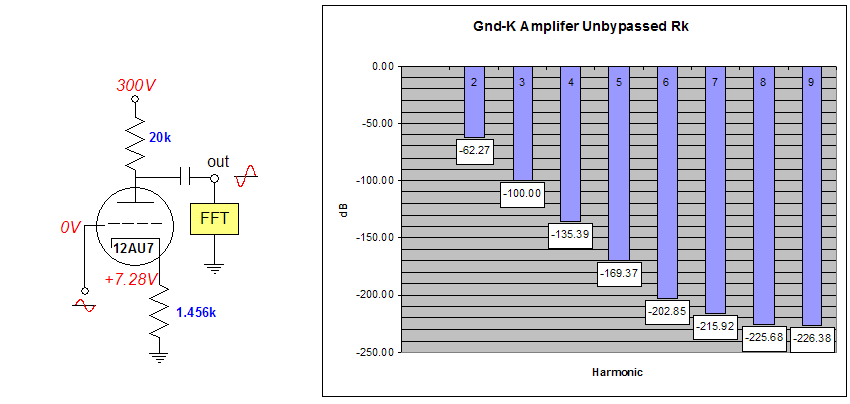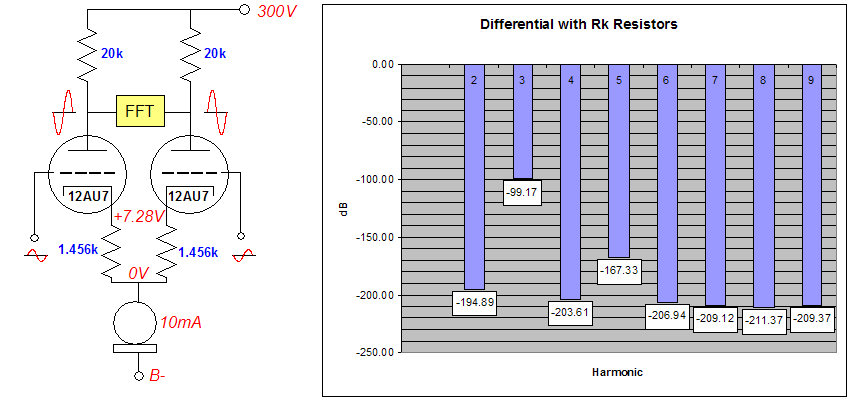Steve, What do you want to know? Chip amp designs that sound like class A or operating chipamps in class A or the importance of the feedback loop to the workings of a chipamp.
the thread seemed like a work in progress and if there was further progress i was interested to read about it.
all three of the subtopics you mention strike me as worthy of further investigation and further learning, although i'm reasonably comfortable with the third one.
On op-amps you might do worse than read Bruce Putzey's article "The F-word or, why there is no such thing as too much feedback" as it has a very clear outline of the issues associated with op-amps (and the differential/integrator/output amp design)
FWIW the JLH always ends up back in my system - I suspect because it doesn't have a differential input stage.
you may be right in that suspicion.
it's not THAT difficult to design an amp that will measure well with the 2 typical tests (sine wave THD+N or two-tone IMD). it's quite another matter to design one with truly clean full spectrum given a complex input signal. with all due respect for TI's impressive chipamps, if there exists a differential input SS amp that does this, i have yet to cross paths with it. and unfortunately for me, i find the non-harmonic junk products abrasive and very tiring. ever listen to the old Crown 300 with a really good and efficient speaker? tests well enough but the spectrum as a whole is a mess and the sound is truly abominable. with modern differential input SS amps it's like that for me, just on a smaller scale.
another thought on differential issues. in the tube/valve there is a noticeable difference in spectrum but it's hard to guess which would sound better. here are the results of a roughly apples-to-apples matchup with standard well engineered 12au7 circuits
#1- single-ended triode (no feedback, unbypassed cathode R)

#2- triode differential (no feedback, unbypassed cathode R)

THD is almost all 2nd harmonic for #1 at -60db, 3rd harmonic is -100 db
monotonically improving at higher orders
THD is very low except for 3rd but even 3rd is -99db
not quite as monotonically decreasing at high orders
[of course, the 2nd harmonic performance is largely attributable to the current source and to cancellation at the balanced output so it's maybe not quite a fair fight and the results could be highly layout-sensitive]
certainly either amp measures very well (with a cheap 12au7 and zero negative feedback!).
but which would be less irritating? who knows.
#1- single-ended triode (no feedback, unbypassed cathode R)

#2- triode differential (no feedback, unbypassed cathode R)

THD is almost all 2nd harmonic for #1 at -60db, 3rd harmonic is -100 db
monotonically improving at higher orders
THD is very low except for 3rd but even 3rd is -99db
not quite as monotonically decreasing at high orders
[of course, the 2nd harmonic performance is largely attributable to the current source and to cancellation at the balanced output so it's maybe not quite a fair fight and the results could be highly layout-sensitive]
certainly either amp measures very well (with a cheap 12au7 and zero negative feedback!).
but which would be less irritating? who knows.
Last edited:
errata for the previous post. where i say zero negative feedback it should say no negative feedback beyond the local degeneration (from the unbypassed cathode resistors)
also the second paragraph after the graphs is missing the identifier "#2"
also the second paragraph after the graphs is missing the identifier "#2"
Last edited:
certainly either amp measures very well (with a cheap 12au7 and zero negative feedback!). but which would be less irritating? who knows.
If you can build it, the second one.
The siren song of differential amplifiers is that they presume balance has been achieved. Actually you have a mix of balanced and unbalanced signal (which gets worse as the stages pile up unless you use interstage transformers).
If you haven't already read
The Sound of the Machine: The Hidden Harmonics behind THD do so.
Lynn's travels through this problem are coveredhere. Somewhere there's a discussion on the Raven pre-amp (which is differential) and the issues associated with different "current source" arrangements
I've just discovered (but haven't read)
Rethinking Distortion: Towards a Theory of 'sonic Signatures'.
By Bernd Gottinger ProQuest, 2007 - 471 pages.
actually i already have a linestage based on the second one running in an end-to-end balanced setup. it uses a 6922 (with different parts values and voltages, of course)
6922 has slightly higher distortion than the 12au7 but a much lower noise floor.
but i wouldn't claim that it sounds better overall than my other tube pre which is a 4-parallel 6922 common cathode.
you're absolutely right about that presumption. an amp in a real setup does not measure as well as what the graphic shows, for that and numerous other reasons.
it was MUCH easier to get things close to right in the 4-parallel pre than the balanced one.
6922 has slightly higher distortion than the 12au7 but a much lower noise floor.
but i wouldn't claim that it sounds better overall than my other tube pre which is a 4-parallel 6922 common cathode.
you're absolutely right about that presumption. an amp in a real setup does not measure as well as what the graphic shows, for that and numerous other reasons.
it was MUCH easier to get things close to right in the 4-parallel pre than the balanced one.
Last edited:
- Status
- Not open for further replies.